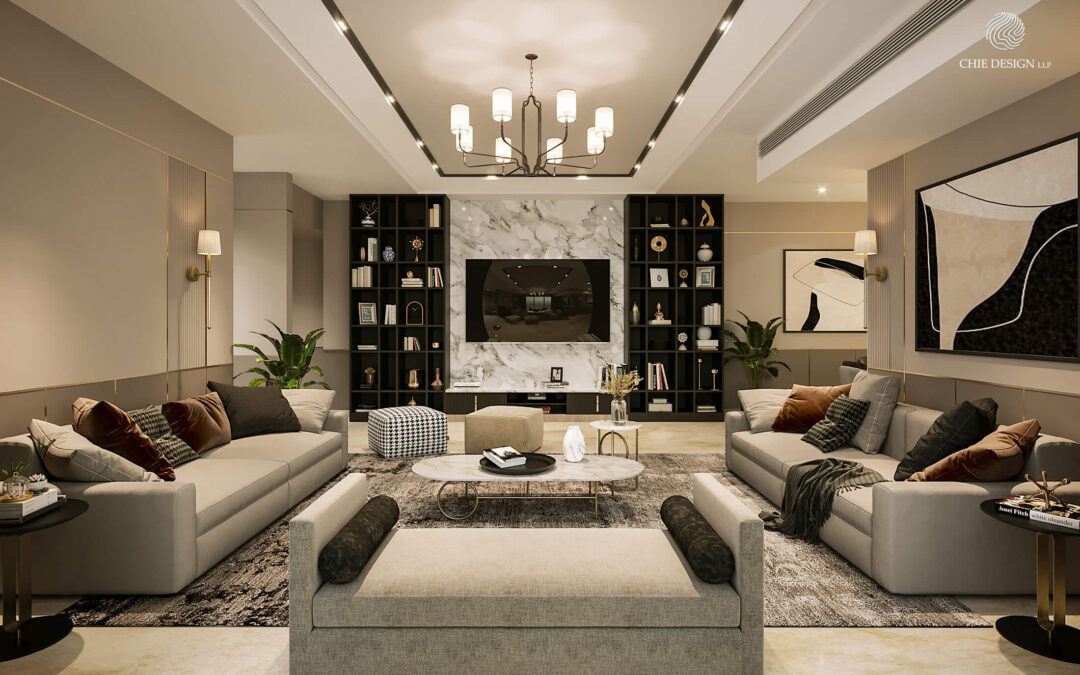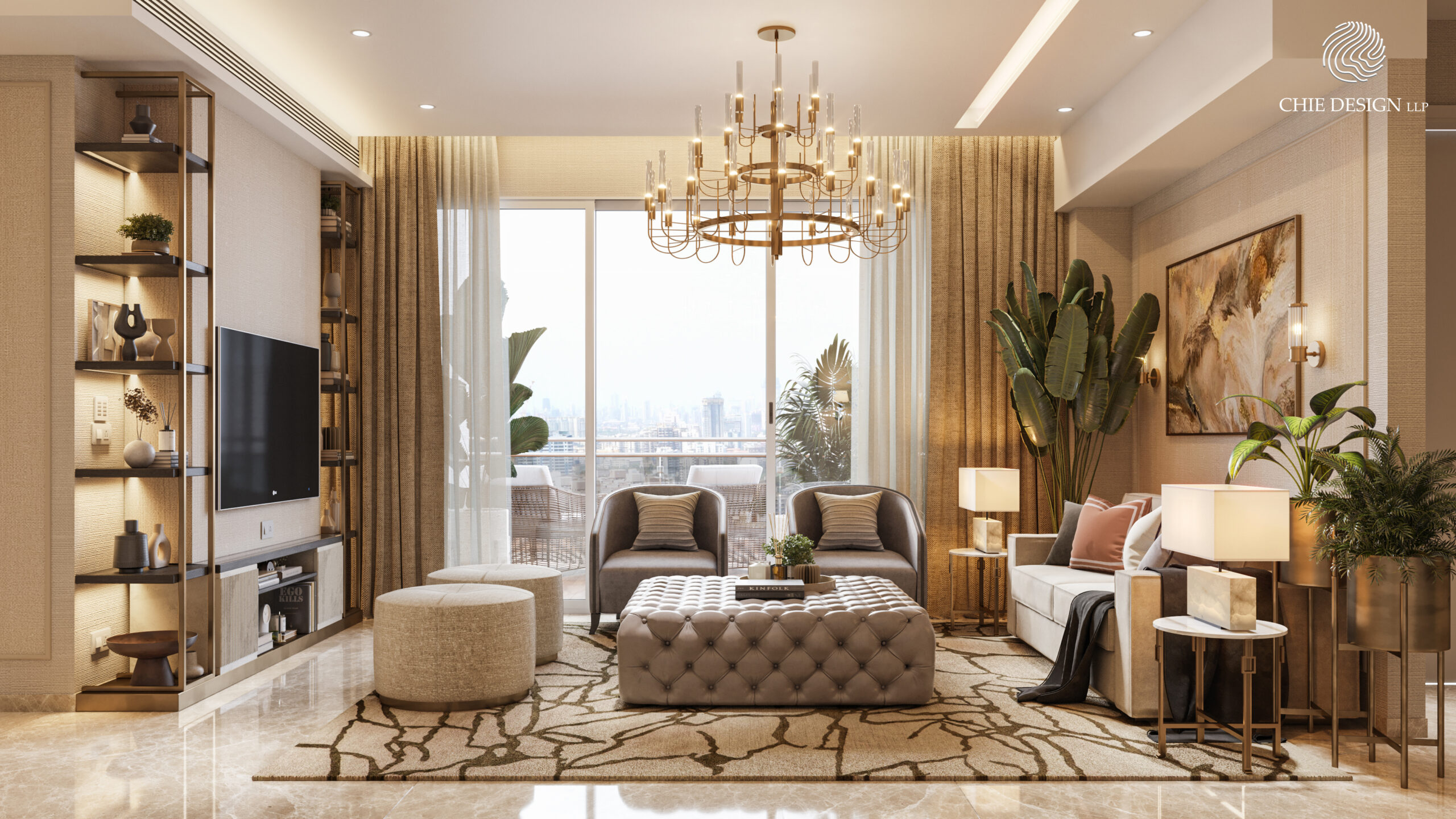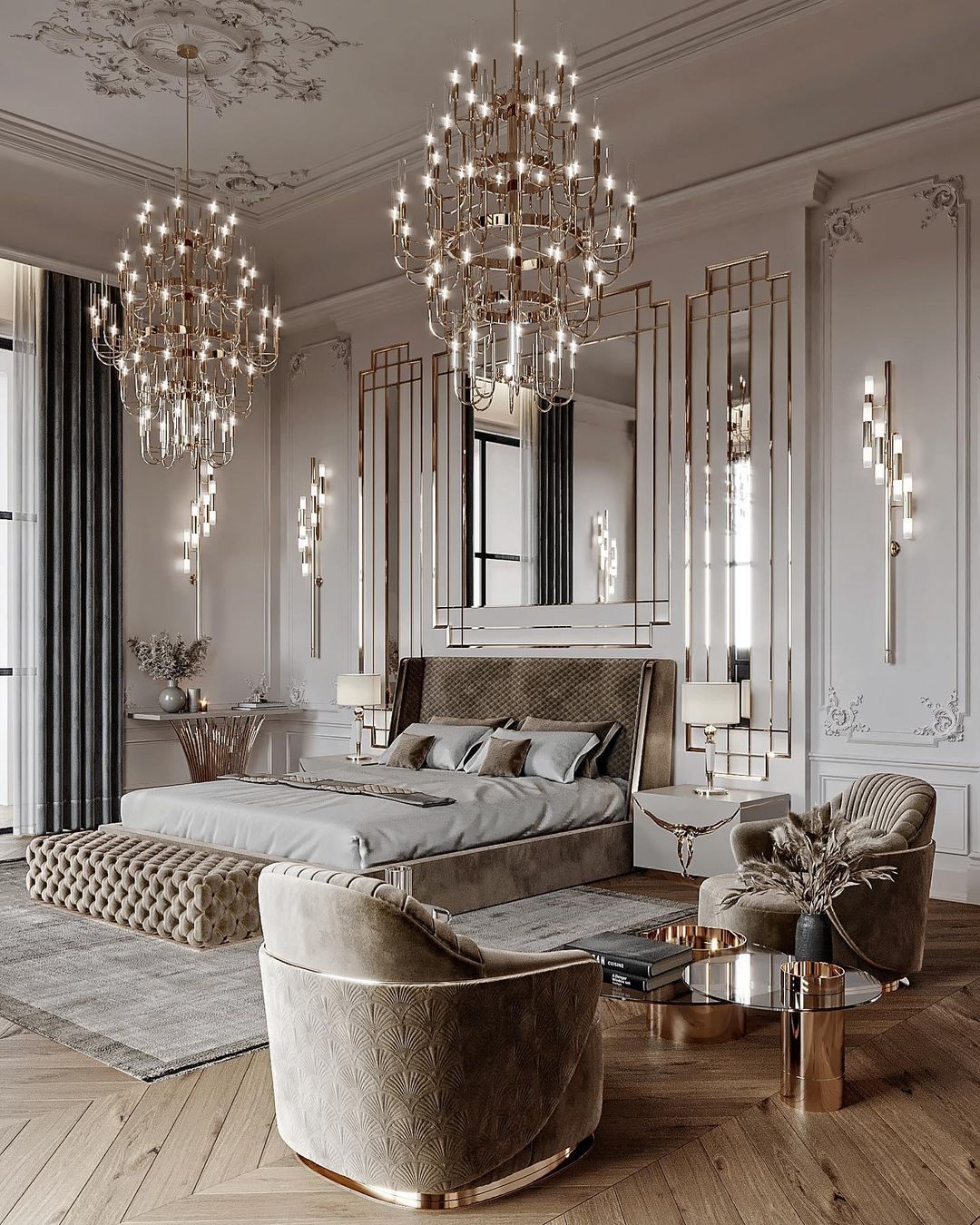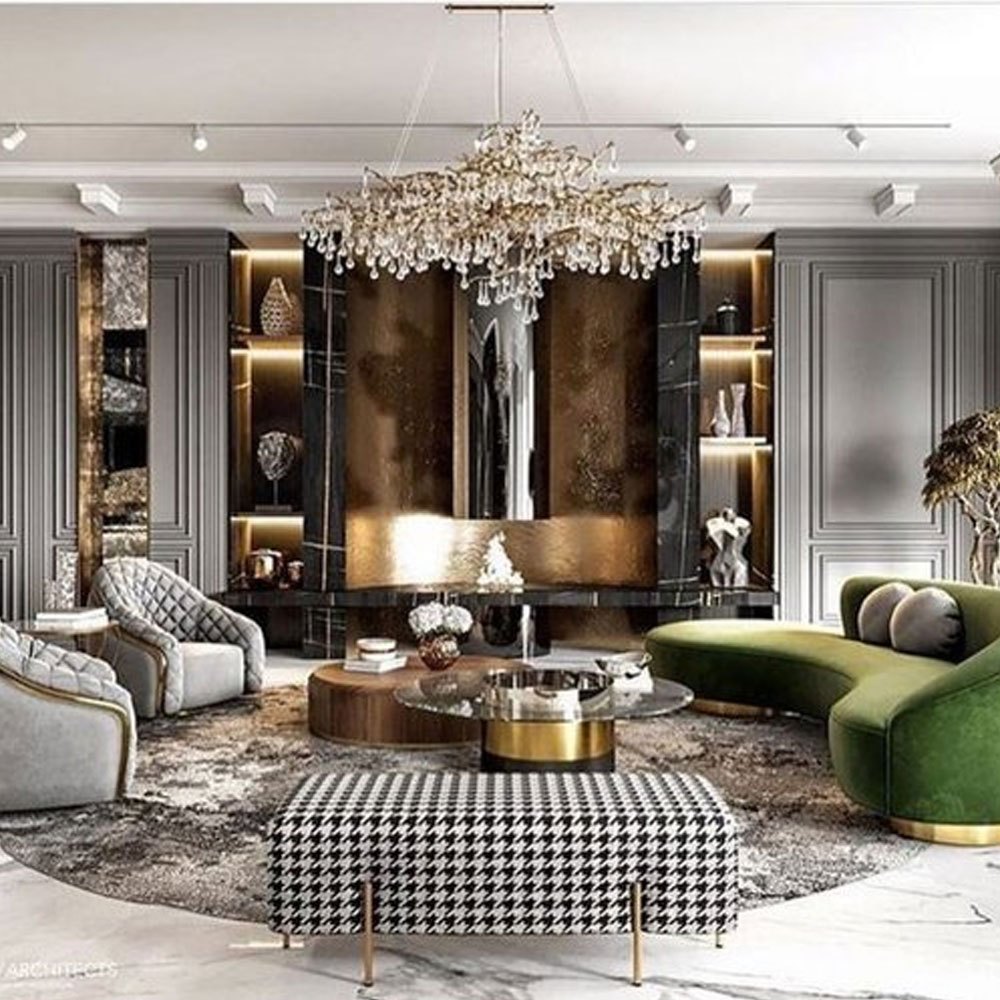Introduction to Luxury Interior Design
Embarking on a luxury interior design journey is more than just transforming a physical space; it’s an artful endeavor that infuses sophistication and grace into every corner of your home. In this ever-evolving field, where elegance meets functionality, understanding the core principles of luxury design can remarkably elevate your residential environment.
Luxury interior design is defined by its timelessness and commitment to quality. It combines the opulence of high-end materials, the uniqueness of bespoke furnishings, and the strategic use of space to create an extraordinary living experience. The goal is not merely to enhance aesthetics, but to craft an atmosphere that exudes comfort and exclusivity, reflecting the homeowner’s personality and lifestyle.
A crucial aspect of achieving a luxurious aesthetic is the meticulous selection of materials. From the rich textures of natural stone to the plush feel of top-tier fabrics, every element is handpicked to contribute to the overall sophistication of the space. These materials are not only chosen for their beauty but also for their durability and sustainability, echoing a commitment to creating spaces that are both stunning and environmentally conscious. For more in-depth insights on sustainable luxury design, you can explore resources at Architectural Digest.
Additionally, luxury design is about more than just selecting premium elements; it’s about tailoring those elements to the client’s exact needs. Bespoke furniture—custom-designed and often handcrafted—becomes an essential feature, ensuring that every piece is a reflection of the owner’s taste. This tailored approach underscores the exclusivity and personal touch that is the hallmark of true luxury.
In essence, luxury interior design is not a one-size-fits-all formula. It’s about creating a unique narrative for your home that enhances everyday living while serving as a private retreat from the world. By embracing this philosophy, you invite a sense of grandeur and harmony into your life, making it an investment in both aesthetic and emotional well-being.
Key Elements of Luxury Interior Design
Luxury interior design marries elegance and functionality through carefully chosen elements that transform any living space into a sanctuary of opulent bliss. In this pursuit of perfection, three essential pillars stand out: high-end materials, bespoke furniture, and exclusive design approaches.
High-End Materials
High-end materials set the foundation of luxury interior design. The use of top-quality products not only enhances the visual appeal but also affirms longevity and durability. From the gleaming allure of marble countertops to the refined warmth of hardwood floors, each element contributes to creating an atmosphere of sophistication. Silks, cashmeres, and organic cottons envelop the home with their sumptuous textures, inviting residents and guests alike to indulge in their tactile pleasure. In luxury spaces, the choice of materials must resonate with both aesthetic beauty and unmatched quality. According to Elle Decor, opting for such high-end materials can significantly increase the value of your home, creating an environment that is as durable as it is beautiful.

Bespoke Furniture
In the realm of luxury, bespoke furniture is essential to achieving a truly personalized design. Custom pieces reflect individuality and uniqueness, crafted meticulously to complement the architectural nuances of the space. Tailored furniture not only fills the void of conventional mass-produced items but also offers solutions to awkward spaces with unparalleled precision. The tailored elegance of a bespoke designer sofa or a custom dining table becomes the focal point of any upscale interior, enhancing the uniqueness of the space with its distinctive charm. Furniture that is customized in terms of size, material, and finish evokes an unmatched narrative of exclusivity and taste.

Exclusive Design Approaches
Exclusive design approaches redefine luxury interior design, emphasizing innovation and creativity. Incorporating distinctive design elements demands an understanding of the latest trends and an appreciation for timeless classics. This may include integrating state-of-the-art technology seamlessly with design elements, or the adoption of minimalist aesthetics that emphasize space, light, and airiness. Exclusive approaches consider every facet of design, from artful lighting solutions that set the mood to the strategic placement of art and decorative accents that showcase personalized tastes. These sophisticated methods blend form and function, ultimately crafting interiors that are nothing short of spectacular.

By focusing on these key elements—high-end materials, bespoke furniture, and exclusive design approaches—you can elevate your space into a luxurious haven that speaks of elegance and refined taste. Remember that true luxury is not a matter of opulence, but rather the art of creating a harmonious balance between beauty, comfort, and individual expression.
Creating Opulent Living Environments
Understanding Space and Layout
In the realm of luxury interior design, understanding space and layout is paramount to crafting an environment that exudes elegance and sophistication. The strategic use of space shapes the flow of a room, dictating not only its functionality but also its opulent aesthetic. In luxury settings, it’s crucial to master the art of proportion, balance, and harmony, allowing each element to complement and enhance the overall design narrative.
When designing a luxury living space, consider the spatial relationships between furniture and architectural features. The arrangement should facilitate easy movement and conversation, while also spotlighting focal points like a grand fireplace or an exquisite piece of art. For instance, aligning a statement furniture piece with a panoramic window can draw attention to stunning views, infusing natural majesty into the opulence of the interiors.
Moreover, exploring various layout styles—such as symmetrical for a classic, formal feel or asymmetrical for a more contemporary look—can vastly alter the ambiance. Each choice in layout offers an opportunity to amplify luxury by ensuring that every square foot radiates intentionality and grace.
Color Palettes and Textures
The selection of colors and textures plays a vital role in transforming a space into a luxurious haven. A harmonious color palette can evoke a sense of calm and allure, essential for any refined environment. Typically, luxury designs favor timeless hues like rich creams, deep blues, or bold blacks, which can be tailored to reflect personal taste while maintaining an air of sophistication.
Incorporating a variety of textures adds dimension and depth, essential components in achieving a sumptuous aesthetic. Consider combining materials such as sumptuous velvet, lustrous silk, and richly grained wood to create a tactile experience that enhances visual interest. The interplay between these textures can dramatically alter the perception of space, making it feel both expansive and intimately inviting.
When selecting your color and texture combinations, take cues from renowned design sources, such as Elle Decor’s guide on luxury home color palettes, which provides expert advice on blending tones and textures to achieve maximum elegance. Let these elements guide your creativity, ensuring your space not only embodies luxury but also resonates with personal flair.

In essence, crafting opulent living environments demands more than just selecting high-end materials; it requires a meticulous understanding of how space, layout, color, and texture interlace to create a holistic experience of refined living. Embrace the art of thoughtful design to elevate your space into a sanctuary of sophistication.
Current Interior Design Trends in Luxury
Sustainability in Luxury Designs
In the realm of luxury interior design, the integration of sustainable practices is no longer just a trend—it is an essential component. Homeowners and designers alike are increasingly prioritizing eco-conscious choices that merge opulence with environmental responsibility. This demand for sustainable luxury has led to a surge in the use of eco-friendly materials such as recycled wood, organic fabrics, and non-toxic finishes, which not only minimize environmental impact but also exude timeless elegance.
Designers are taking meticulous care in sourcing materials that are not only luxurious but also responsibly harvested, ensuring that the choice of a stunning marble countertop or hardwood flooring doesn’t come at the expense of the planet. Technologies that support sustainability, like energy-efficient lighting and optimizing natural light sources, are also gaining prominence. These choices are designed to reduce the home’s carbon footprint while maintaining an air of magnificence and luxury.
Moreover, the ethos of sustainability in luxury extends beyond materials to encompass the entire lifecycle of design—from production to usage and eventual recycling. Consider the growing trend of adaptive reuse, where historic and unique elements are repurposed, preserving the charm of the old while embracing the efficiency of the new. For further reading on sustainable luxury practices, you can refer to Sustainable Development Goes Open Source.
Smart Home Features in Luxury Design
Incorporating smart home technologies has become an emblem of sophistication and modern living in luxury interior design. These features not only enhance the convenience and security of a residence but also elevate the home environment to a new level of bespoke comfort. Automation systems that control lighting, climate, and entertainment create a seamless lifestyle, achieving perfect harmony between technology and personal wellbeing.
Imagine a home where lighting adjusts to your mood, temperatures are consistently ideal, and exquisite music fills the air—all controlled from the palm of your hand. Voice-activated assistants and integrative systems, such as smart speakers and thermostats, streamline everyday functions, while enhanced security features provide peace of mind without compromising style.
Furthermore, smart technology thrives on customization, another hallmark of luxury design. Residents can personalize their homes to reflect unique preferences and tastes, combining the elegance of traditional design with the cutting-edge conveniences of today’s innovations. As technology progresses, so too does the ability to blend it harmoniously into the tapestry of luxury living, all while maintaining the revered aesthetics that define elegance.
Luxury interior design is continuously evolving, interweaving technology and sustainability to craft homes that are as functional as they are beautiful. Embrace these trends to illuminate your living space with a grandeur that also honors environmental consciousness.
Choosing Your Luxury Interior Designer
Selecting the right luxury interior designer is pivotal in transforming your space into a haven of elegance and style. Such a decision requires careful consideration of distinct qualities and informed questioning to ensure alignment with your vision.
Qualities to Look For
When embarking on the journey of choosing a luxury interior designer, certain key qualities are non-negotiable. Firstly, experience is paramount. An established portfolio showcasing diverse and high-caliber projects can provide assurance of a designer’s capability to handle complex tasks. Additionally, a keen attention to detail is essential, as luxury lies in the perfection of nuances.
Moreover, the ability to blend creativity with practicality distinguishes remarkable designers. They should possess a visionary mindset while maintaining functionality in your living spaces. It’s also vital that your designer has a strong understanding of current trends and a deep appreciation for timeless elegance—balancing contemporary flair with classic principles.
Finally, excellent communication and collaboration skills ensure a smooth and enjoyable design process. Designers who listen well and can translate your desires into tangible results are priceless. A designer’s reputation for professionalism and integrity should also be considered. Consulting reviews, testimonials, and possibly speaking with previous clients can provide additional insight into their work ethic and reliability.
Questions to Ask
Before committing to a designer, conducting a thorough interview is crucial. Here are some insightful questions to ask:
- What is your design philosophy, and how does it align with luxury interior design principles? This will help you understand if their style resonates with your vision.
- Can you provide examples of past luxury projects similar to mine? Request to see a portfolio or even visit a past project if possible, to get a sense of their style and competence.
- How do you incorporate sustainability and smart-home features into your designs? As luxury often intertwines with modern advancements and environmental consciousness, demonstrating expertise in these areas is beneficial.
- What is your approach to budget and time management? Understanding their process for managing costs and timelines is crucial for a successful partnership.
-
How do you handle unexpected challenges during a project? Their problem-solving skills can have a significant impact on the outcome of your project.
-
Can you provide references from past clients? Speaking with former clients can provide firsthand accounts of their process, reliability, and results.
For a rich insight into the impact of luxury interior design, you might refer to Architectural Digest which regularly features acclaimed professionals in the field.
Choosing the ideal luxury interior designer is a significant step in realizing your dream home. With a clear understanding of the qualities to seek and questions to ask, you can embark on this endeavor with confidence, ensuring that your space is infused with elegance and sophistication.
Conclusion: Embracing Luxury in Your Home
Embracing luxury interior design is not just about filling your home with extravagant items; it’s about creating a harmonious environment that reflects your personal taste and elevates your everyday living experience. By carefully selecting high-end materials and utilizing bespoke furniture, your home becomes a unique sanctuary that exudes elegance and sophistication.
When you choose to integrate luxury designs, you are investing in the artistry of space. This involves not only an appreciation for exclusive design approaches but also a commitment to quality and meticulous detail. A well-designed luxury interior speaks volumes, weaving a narrative that showcases both individuality and timeless style.
Incorporating current interior design trends, such as sustainability and smart home features, ensures that your space remains relevant and future-forward. As the world increasingly prioritizes eco-friendly practices, ensuring your home adheres to these ideals amplifies its value and allure. For insights into sustainable luxury interiors, visit Architectural Digest.
The journey to creating a luxurious home is deeply personal, requiring the guidance of a skilled luxury interior designer. Their expertise in understanding your unique desires and transforming them into reality is invaluable. They bring your vision to life, carefully crafting each element from layout to color palettes and textures, ensuring your home is both beautiful and functional.
Ultimately, a luxurious living environment not only enhances your quality of life but also becomes a legacy of style and grace. By embracing luxury in your home, you are choosing to indulge in a lifestyle of comfort, aesthetics, and enduring elegance. This transformation is about more than mere appearance; it is the art of living well.


